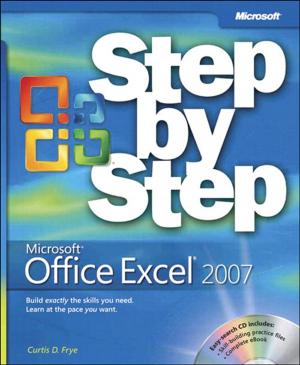Lean Integration: An Integration Factory Approach to Business Agility
An Integration Factory Approach to Business Agility
Nonfiction, Computers, Advanced Computing, Management Information Systems, Business & Finance, Industries & Professions, Information Management| Author: | John J. Schmidt, David Lyle | ISBN: | 9780321712394 |
| Publisher: | Pearson Education | Publication: | May 18, 2010 |
| Imprint: | Addison-Wesley Professional | Language: | English |
| Author: | John J. Schmidt, David Lyle |
| ISBN: | 9780321712394 |
| Publisher: | Pearson Education |
| Publication: | May 18, 2010 |
| Imprint: | Addison-Wesley Professional |
| Language: | English |
Use Lean Techniques to Integrate Enterprise Systems Faster, with Far Less Cost and Risk
By some estimates, 40 percent of IT budgets are devoted to integration. However, most organizations still attack integration on a project-by-project basis, causing unnecessary expense, waste, risk, and delay. They struggle with integration “hairballs”: complex point-to-point information exchanges that are expensive to maintain, difficult to change, and unpredictable in operation.
The solution is Lean Integration. This book demonstrates how to use proven “lean” techniques to take control over the entire integration process. John Schmidt and David Lyle show how to establish “integration factories” that leverage the powerful benefits of repeatability and continuous improvement across every integration project you undertake.
Drawing on their immense experience, Schmidt and Lyle bring together best practices; solid management principles; and specific, measurable actions for streamlining integration development and maintenance.
Whether you’re an IT manager, project leader, architect, analyst, or developer, this book will help you systematically improve the way you integrate—adding value that is both substantial and sustainable.
Coverage includes
- Treating integration as a business strategy and implementing management disciplines that systematically address its people, process, policy, and technology dimensions
- Providing maximum business flexibility and supporting rapid change without compromising stability, quality, control, or efficiency
- Applying improvements incrementally without “Boiling the Ocean”
- Automating processes so you can deliver IT solutions faster–while avoiding the pitfalls of automation
- Building in both data and integration quality up front, rather than inspecting quality in later
- More than a dozen in-depth case studies that show how real organizations are applying Lean Integration practices and the lessons they’ve learned
Visit integrationfactory.com for additional resources, including more case studies, best practices, templates, software demos, and reference links, plus a direct connection to lean integration practitioners worldwide.
Use Lean Techniques to Integrate Enterprise Systems Faster, with Far Less Cost and Risk
By some estimates, 40 percent of IT budgets are devoted to integration. However, most organizations still attack integration on a project-by-project basis, causing unnecessary expense, waste, risk, and delay. They struggle with integration “hairballs”: complex point-to-point information exchanges that are expensive to maintain, difficult to change, and unpredictable in operation.
The solution is Lean Integration. This book demonstrates how to use proven “lean” techniques to take control over the entire integration process. John Schmidt and David Lyle show how to establish “integration factories” that leverage the powerful benefits of repeatability and continuous improvement across every integration project you undertake.
Drawing on their immense experience, Schmidt and Lyle bring together best practices; solid management principles; and specific, measurable actions for streamlining integration development and maintenance.
Whether you’re an IT manager, project leader, architect, analyst, or developer, this book will help you systematically improve the way you integrate—adding value that is both substantial and sustainable.
Coverage includes
- Treating integration as a business strategy and implementing management disciplines that systematically address its people, process, policy, and technology dimensions
- Providing maximum business flexibility and supporting rapid change without compromising stability, quality, control, or efficiency
- Applying improvements incrementally without “Boiling the Ocean”
- Automating processes so you can deliver IT solutions faster–while avoiding the pitfalls of automation
- Building in both data and integration quality up front, rather than inspecting quality in later
- More than a dozen in-depth case studies that show how real organizations are applying Lean Integration practices and the lessons they’ve learned
Visit integrationfactory.com for additional resources, including more case studies, best practices, templates, software demos, and reference links, plus a direct connection to lean integration practitioners worldwide.















